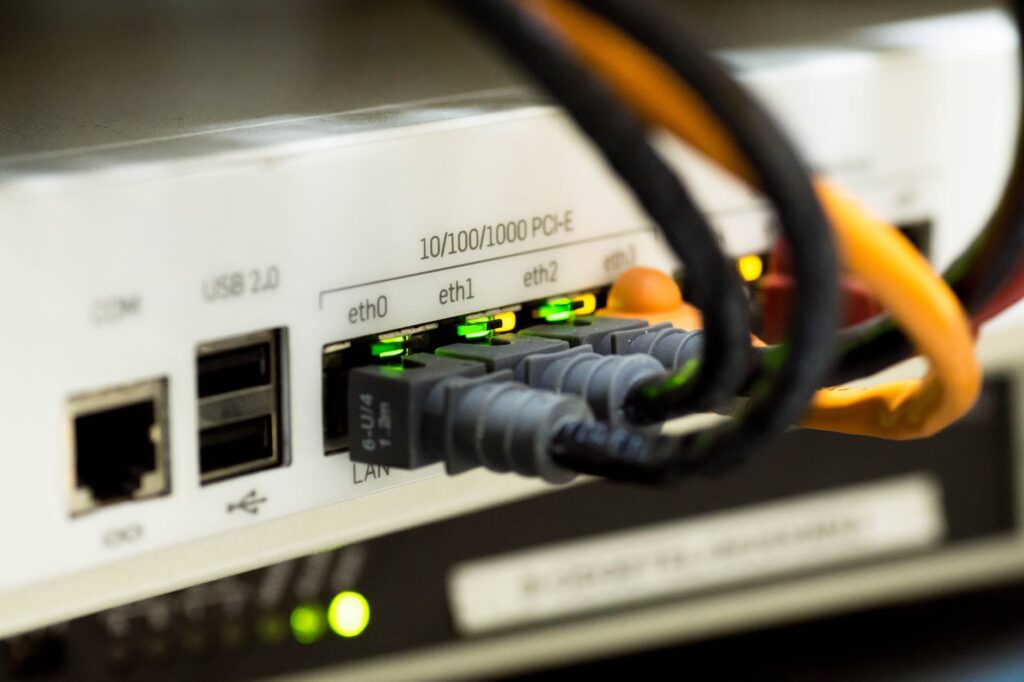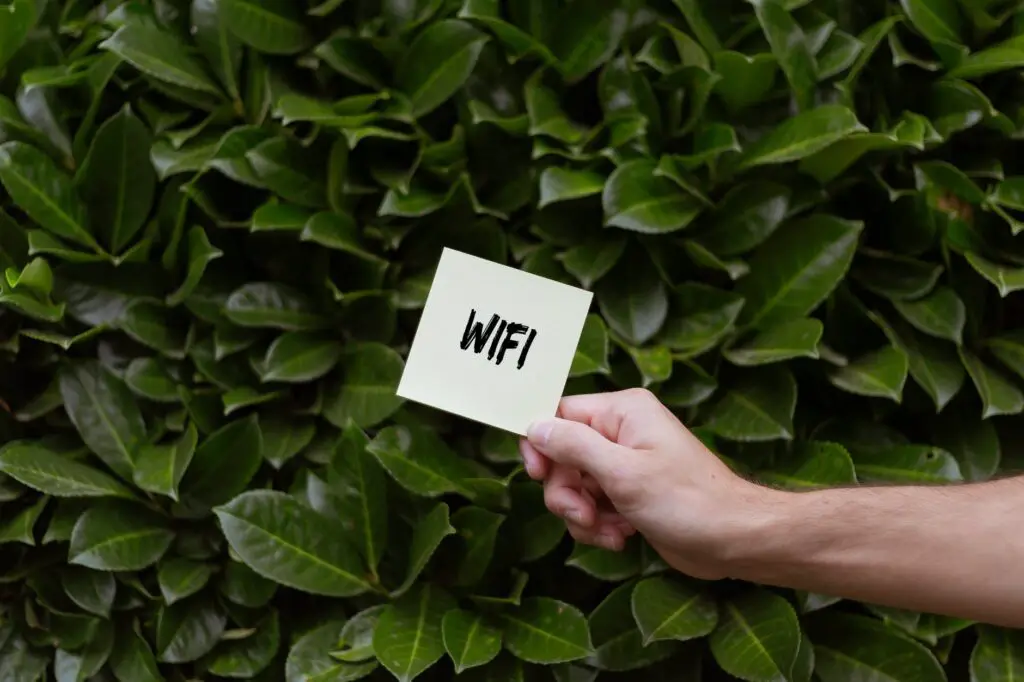Table of Contents
Introduction
Have you ever glanced at your FIOS router and wondered what all those blinking lights mean? It might seem like a cryptic code, but fear not! In this blog post, we’ll demystify the FIOS router lights, breaking down each one in simple, conversational terms. Understanding these lights will help you troubleshoot issues and make the most of your high-speed internet connection.

Power Light
Let’s start with the most basic one: the power light. This is usually a solid white or green light. It simply indicates that your router is receiving power and is turned on. If it’s off or blinking, check the power source and make sure your router is plugged in correctly.
Internet Light
The internet light is another critical indicator. When it’s solid green or white, it means your router is successfully connected to the internet. If it’s off or blinking, you may have an issue with your internet service provider or your router’s configuration.
LAN Lights
You’ll likely see several LAN (Local Area Network) lights, each corresponding to an Ethernet port on your router. These lights indicate whether devices are connected via Ethernet cables. A solid light means the connection is active, while a blinking light suggests data traffic. If a LAN light is off, check the cable connections or device status.
Wi-Fi Lights
Your FIOS router will have lights for Wi-Fi networks, usually labeled “2.4 GHz” and “5 GHz.” When these lights are on, it means that your Wi-Fi networks are active. If they’re off, your Wi-Fi might be disabled. You can usually enable it through the router’s settings.
WPS Light
WPS stands for Wi-Fi Protected Setup. If you see a WPS light, it’s usually a small button or indicator light that helps you connect devices to your Wi-Fi network quickly. When you press the WPS button and it blinks, it’s ready to pair with a device. Once the connection is established, the light should become solid again.
Phone Light
If you have FIOS phone service, you’ll have a phone light on your router. A solid light indicates that your phone service is working correctly. If it’s off or blinking, you might need to check your phone connections or contact your service provider.
USB Light
Some FIOS routers have USB ports for connecting external devices like printers or external hard drives. The USB light indicates whether a USB device is connected and active.
Troubleshooting Tips
Now that you know what each light means, here are some quick troubleshooting tips:
- If your internet light is off, check your internet service provider’s status or reboot your router.
- If Wi-Fi lights are off, try rebooting the router or enabling Wi-Fi in the settings.
- For LAN lights, make sure Ethernet cables are securely connected.
- If the power light is off, verify the power source and connections.
FIOS Router Yellow Light explained
A blinking yellow light on a FIOS router typically indicates that there is an issue with the internet connection. Here are some common reasons why the yellow light might be blinking:

- Connection Issue: The router is having trouble establishing a connection with your internet service provider. This could be due to a temporary outage, a problem with the ISP’s equipment, or a misconfiguration.
- Software Update: In some cases, a yellow blinking light could indicate that the router is in the process of updating its firmware or software. This is usually a temporary situation, and the light should return to its normal state once the update is complete.
- Router Configuration Issue: If there’s a problem with the router’s settings or configuration, it may not be able to establish a stable connection to the internet. You might need to access the router’s settings and check for any errors or misconfigurations.
- Hardware Problem: It’s also possible that there’s a hardware issue with the router itself. If none of the above solutions work and the yellow blinking light persists, it might be a good idea to contact your internet service provider or the router manufacturer for further assistance.
To troubleshoot and resolve the issue, you can try the following steps:
- Reboot Your Router: Sometimes, a simple reboot can fix connection issues. Unplug the router from the power source, wait for about 30 seconds, and then plug it back in. Allow it a few minutes to restart and see if the blinking yellow light resolves.
- Check Your Internet Connection: Make sure there are no outages in your area by contacting your internet service provider or checking their website or social media for updates.
- Inspect Cables: Ensure that all cables, including the Ethernet cable connected to the WAN port of the router, are securely plugged in. A loose or damaged cable could cause connectivity problems.
- Update Firmware: Access your router’s settings through a web browser and check for firmware updates. If an update is available, install it, as it might address the issue.
- How to reset fios router: As a last resort, you can perform a factory reset on your router. Keep in mind that this will erase all your customized settings, so only do this if you’re comfortable reconfiguring your router.
If the blinking yellow light persists after trying these steps, it’s advisable to reach out to your internet service provider’s customer support or the router manufacturer’s support for further assistance. They can help you diagnose and resolve the issue more effectively.
Blinking White light on FIOS router
A blinking white light on a FIOS router can indicate various things depending on the router model and its configuration. Here are some common reasons for a blinking white light:
- Boot-Up or Startup: When you first power on your FIOS router or after a restart, it may go through a startup sequence during which the white light blinks. This is usually normal and should resolve once the router completes its boot-up process, which typically takes a few minutes.
- Firmware Update: Some routers blink white during a firmware update. This indicates that the router is in the process of updating its internal software. It’s essential not to interrupt this process, as doing so can result in firmware corruption. Allow the update to finish, and the blinking should stop once the update is complete.
- Wi-Fi Initialization: In some routers, a blinking white light could indicate that the Wi-Fi is initializing or syncing with connected devices. This usually happens when new devices are trying to connect to the Wi-Fi network or when changes to the Wi-Fi settings are being applied.
- Network Traffic: In certain router models, the white light might blink to indicate network traffic. If there’s data transmission happening on your network, you may notice the light blinking as data packets are being sent and received.
- Errors or Warnings: In some cases, a blinking white light could be a sign of an error or a warning. This could be related to a problem with the router’s configuration, a connection issue, or a malfunction. It’s advisable to check the router’s user manual or contact customer support to understand the specific meaning of the blinking white light in your router model.
- Wi-Fi Protected Setup (WPS): If your router has a WPS button, pressing it may cause the white light to blink. WPS is a feature that allows you to quickly connect devices to your Wi-Fi network without manually entering a password.
If you’re unsure about the meaning of the blinking white light on your FIOS router, refer to the router’s user manual or contact your internet service provider’s customer support for assistance. They can provide specific guidance based on your router model and help you troubleshoot any issues that might be causing the blinking light.
How to Login into FIOS Router
Accessing your FIOS router’s login page is essential for configuring network settings and making adjustments to your internet connection. Here are the general steps to log in to your FIOS router:
1. Connect to Your Router:
- Ensure your computer or mobile device is connected to the FIOS network either via Ethernet cable or Wi-Fi.
2. Open a Web Browser:
- Launch a web browser like Google Chrome, Mozilla Firefox, Microsoft Edge, or Safari.
3. Enter the Router’s IP Address:
- In the browser’s address bar, type the default IP address for most FIOS routers, which is often “192.168.1.1” or “192.168.1.254.” Press “Enter.”
4. Enter Login Credentials:
- You will be prompted to enter a username and password. These credentials are typically found on a sticker on your router or in your FIOS documentation.
- The default username is usually “admin,” and the default password is often printed on the router or provided by your internet service provider. If you’ve changed these credentials before, use the ones you set.
5. Access Router Settings:
- Once you’ve entered the correct login credentials, you should gain access to your FIOS router’s settings page.
From here, you can configure various aspects of your router, such as Wi-Fi settings, security options, port forwarding, and more. Be cautious when making changes, as incorrect settings can affect your internet connection.
Remember to keep your router login credentials secure, and consider changing the default password to enhance security. Additionally, it’s a good practice to periodically update your router’s firmware to ensure optimal performance and security.
Final Thoughts on FIOS Router Troubleshooting
Understanding the lights on your FIOS router can help you maintain a smooth internet connection and troubleshoot problems when they arise. While it may seem overwhelming at first, with this guide, you’ll be better equipped to identify and address any issues that may come your way. So, the next time you spot a blinking light on your router, you can confidently decipher its message and keep your internet running smoothly.


